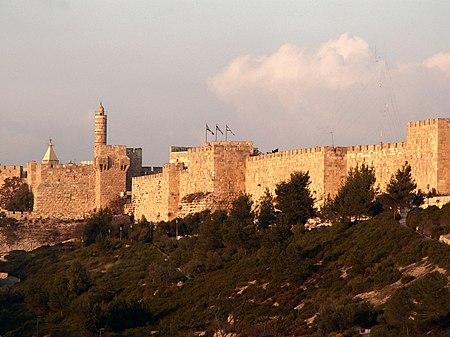Walls of Jerusalem

The Walls of Jerusalem (Hebrew: חומות ירושלים, Arabic: أسوار القدس) surround the Old City of Jerusalem (approx. 1 km2). In 1535, when Jerusalem was part of the Ottoman Empire, Sultan Suleiman I ordered the ruined city walls to be rebuilt. The work took some four years, between 1537 and 1541. The walls are visible on most old maps of Jerusalem over the last 1,500 years. The length of the walls is 4,018 meters (2.497 miles), their average height is 12 meters (39 feet) and the average thickness is 2.5 meters (8.2 feet). The walls contain 34 watchtowers and seven main gates open for traffic, with two minor gates reopened by archaeologists. In 1981, the Jerusalem walls were added, along with the Old City of Jerusalem, to the UNESCO World Heritage Site list.
Excerpt from the Wikipedia article Walls of Jerusalem (License: CC BY-SA 3.0, Authors, Images).Walls of Jerusalem
Agripas, Jerusalem Nahlaot
Geographical coordinates (GPS) Address Nearby Places Show on map
Geographical coordinates (GPS)
| Latitude | Longitude |
|---|---|
| N 31.783333333333 ° | E 35.216666666667 ° |
Address
Agripas 8
9422904 Jerusalem, Nahlaot
Jerusalem District, Israel
Open on Google Maps








